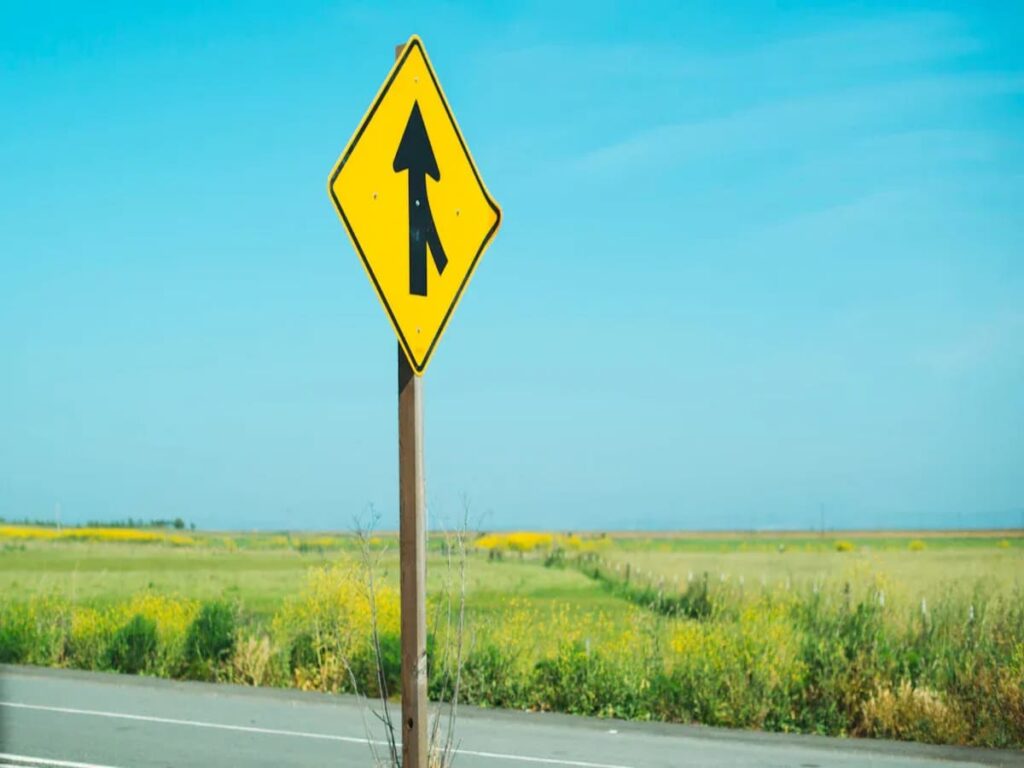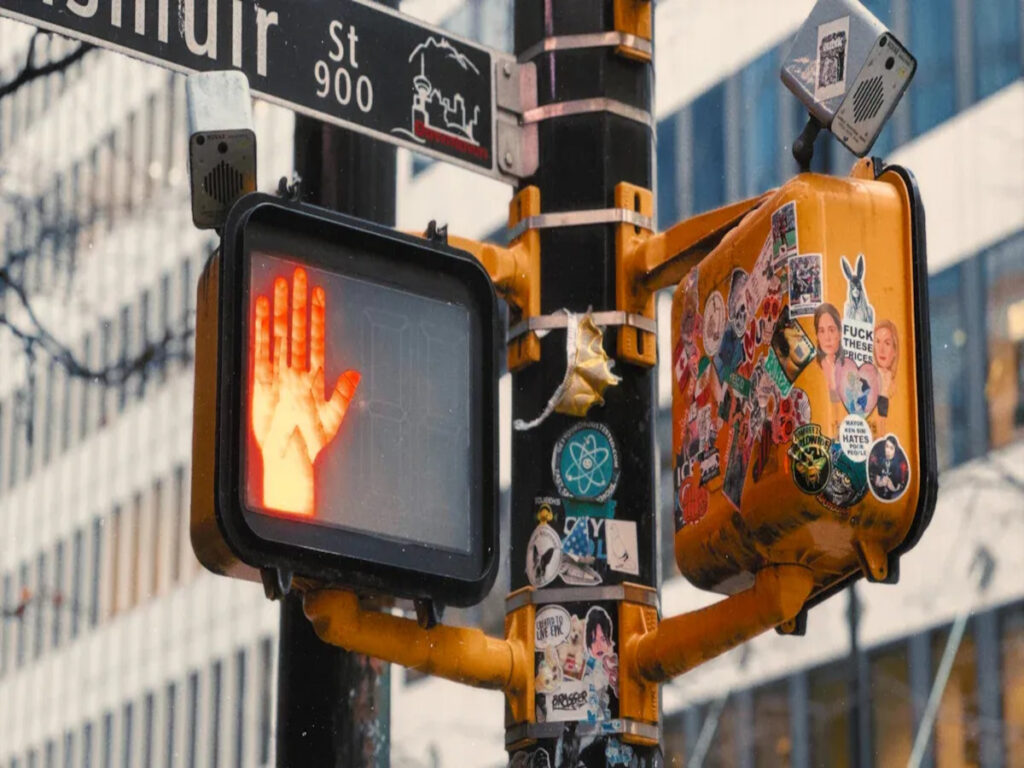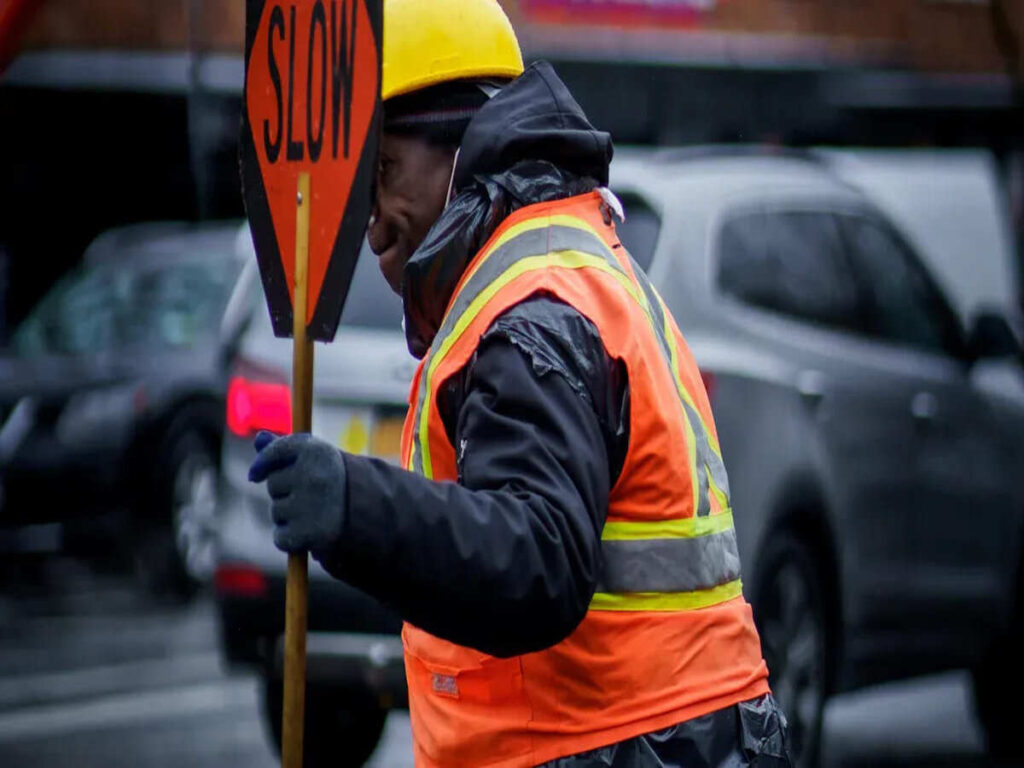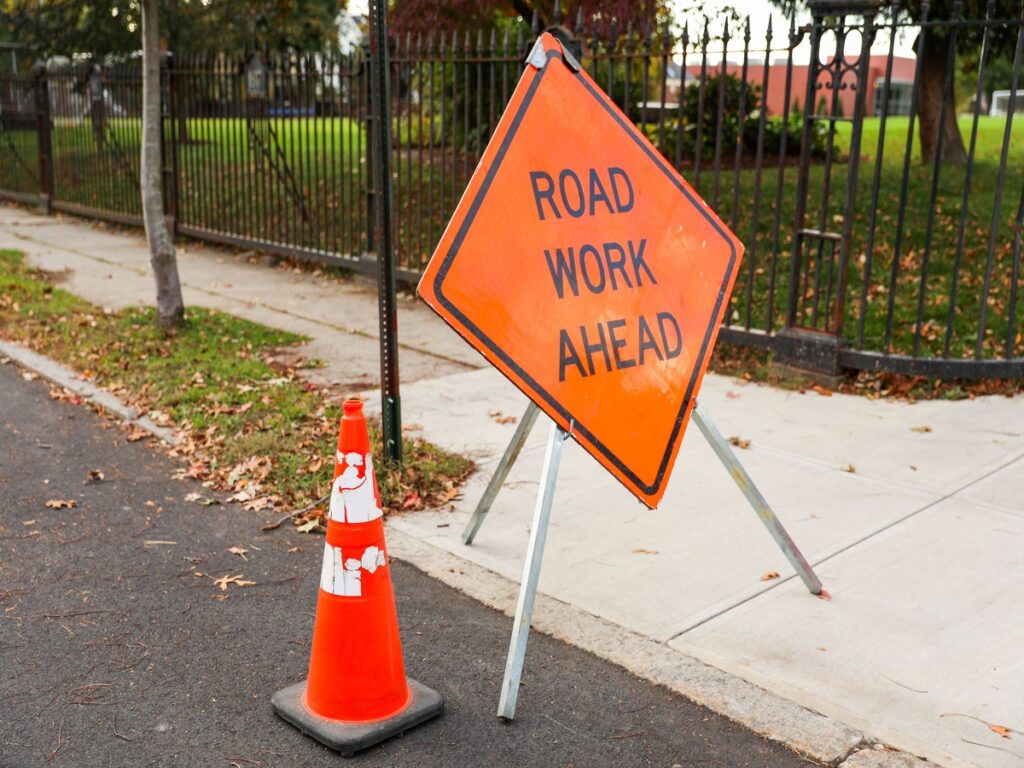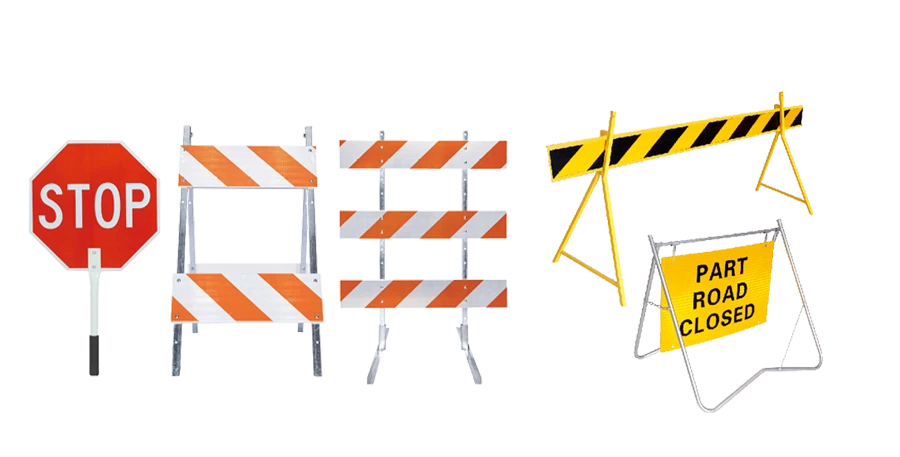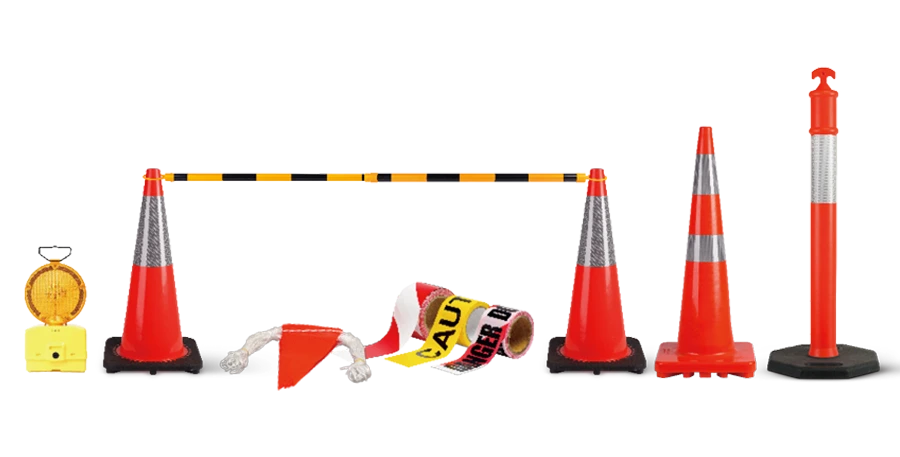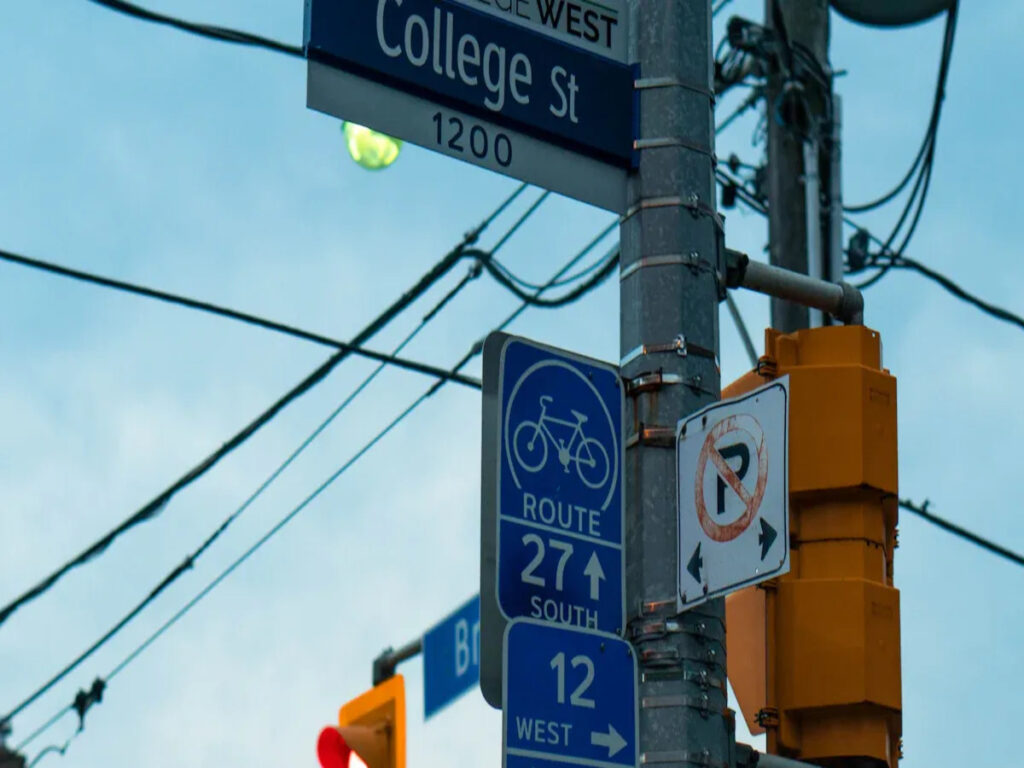
Os suportes de sinal de nome da rua são importantes para manter o tráfego organizado. These brackets hold street signs firmly so everyone can see them. Picking the right bracket keeps signs from blocking views or falling in bad weather. Choosing correctly also follows local rules, helping keep traffic safe and orderly.
OPTRAFFIC provides dependable traffic sign bracket solutions engineered for extruded sign blades. Designed with durability and ease of use in mind, our sign brackets help ensure your street signage stays securely in place and fully compliant—no matter the weather conditions. For municipalities, contratados, and maintenance teams, OPTRAFFIC makes sign mounting simpler and safer.
Takeaways -chave
- Pick the right bracket for your street sign. This helps people see it clearly and stay safe. Unilateral, 2-way, and 3-way brackets work for different needs.
- Use strong materials for brackets so they last in bad weather. This saves money on repairs and keeps signs in place.
- Match the bracket to the post type for easy setup. Redondo, quadrado, and fancy posts need specific brackets to fit well.
- Follow local rules for how high and where signs go. This keeps everyone safe and avoids fines.
- Use rust-proof hardware to make brackets last longer. Check them often to keep signs secure and easy to see.
Why Sign Bracket Selection Matters

Tornando sinais fáceis de ver
Street sign brackets help people see signs clearly. The right bracket keeps the sign at a good height and angle. This makes it simple to read from far away. Bad placement can confuse drivers, especially at busy intersections. Por exemplo, single-sided brackets are great for end-of-road signs. Two-way brackets work better for T-shaped intersections. Strong brackets keep signs secure and visible, Mesmo com mau tempo.
Matching Brackets to Posts
Not all brackets fit every type of post. Some work with round posts, while others fit square or fancy poles. You need the right bracket for the post to avoid problems. Side-mount brackets are good for signs stacked on posts. They attach to the side without blocking other signs. Mast arm brackets are best for signs hanging over highways. Picking the right bracket makes installation easy and avoids extra fixes.
Strong Brackets Last Longer
Good sign brackets help signs last a long time. They don’t rust or break easily, keeping signs useful for years. Cheap brackets wear out fast and make signs fall or fade. This can cause safety problems for drivers. Strong brackets save money on repairs and keep traffic safe. Investing in quality brackets makes your system work better for longer.
Common Types of Street Name Sign Brackets
Street name sign brackets come in many styles for different uses. Each type has a special job to keep signs clear, seguro, e simples de configurar. Let’s look at three popular bracket types and how they are used.
Single-Sided Brackets
Single-sided brackets are basic and easy to use. They hold one street name sign on a post, making them great for spots needing just one sign. You’ll often see them at road ends or in tight spaces.
Dica: Pick single-sided brackets for a neat and simple setup. They work with round, quadrado, or fancy posts, giving you options.
These brackets are light but strong. Eles mantêm sinais constantes, Mesmo em ventos fortes. Their simple design makes them quick to install, Economizando tempo e esforço.
Wondering when to use single-sided vs. double-sided sign brackets? Leia nosso blog: Single-Sided vs. Double-Sided Sign Brackets: Which Do You Need? for a full comparison and practical use cases.
2-Way Brackets
2-way brackets are ideal for corners where two streets meet. They hold two signs, one on each side, forming an “L” forma. This lets drivers see street names from both directions.
You’ll often find 2-way brackets at T-shaped intersections or cross streets. They fit well on round or square posts. Their strong build keeps signs straight and visible, Mesmo com mau tempo.
Observação: Make sure your post type works with 2-way brackets for a snug fit.
3-Way Brackets
3-way brackets are made for spots where three roads meet. They hold three signs at angles, forming a triangle. This helps drivers see signs clearly from any direction.
These brackets are useful in areas with tricky road layouts, like suburbs or rural places. They are tough and resist rust, durando muito tempo.
Para a ponta: Use 3-way brackets to make tricky intersections easier to navigate. Their design helps drivers avoid confusion.
Each bracket type is important for keeping traffic organized. Choosing the right one ensures signs stay clear, seguro, and follow local rules.
4-Way Brackets
4-way brackets are used at intersections with four roads. They hold four signs at right angles, forming a cross. This setup helps drivers see street names from all directions.
You’ll see 4-way brackets in busy cities or grid-like roads. They are strong and keep signs steady in heavy traffic or bad weather. These brackets fit both round and square posts, making them flexible for different needs.
Dica: Choose 4-way brackets to make big intersections clear and organized. They help drivers avoid confusion in tricky road layouts.
Cap-Mount Brackets
Cap-mount brackets give street signs a neat and stylish look. They sit on top of round or square poles, creating a clean design. These brackets are great for areas where appearance is important.
They are simple to install and hold signs firmly in place. Their design stops signs from tilting or moving over time. You’ll often find cap-mount brackets in parks, bairros, or themed areas.
Para a ponta: If you want brackets that look good and work well, pick cap-mount brackets. They make signs look better while staying strong and secure.
Side-Mount Brackets
Side-mount brackets are great for stacking signs on one pole. They attach to the side of a post, keeping signs separate and easy to read.
These brackets are common in places with lots of signs, like downtowns or near highways. They work with round, quadrado, or decorative posts. Their design keeps all signs visible without blocking each other.
Curious how side-mount compares to top-mount brackets? Leia nosso blog: Top vs. Side Mount Street Sign Brackets: Which One to Use? for a full breakdown of pros, cons, and best-use scenarios.
Mast Arm Brackets
Mast arm brackets are used to hold street signs above roads. They attach to horizontal poles called mast arms. You’ll see them at highways or big intersections where signs must be seen from far away. These brackets keep signs steady and easy to read in busy areas.
They are made for heavy-duty jobs and can hold large signs. Some signs may have reflective or LED features for better visibility. Mast arm brackets are perfect for fast-moving traffic, helping drivers see signs early. They also stand up to bad weather, durando muito tempo.
Dica: Pick mast arm brackets for overhead signs to make roads safer and signs clearer.
When choosing these brackets, check the sign’s size and weight. Make sure the bracket is strong enough to hold it without bending. Install the bracket tightly to stop it from moving in wind or vibrations. This keeps signs straight and easy to read.
Wing Brackets
Wing brackets are great for holding two-sided street signs. They attach to posts and show signs on both sides. This helps drivers see the signs no matter which way they’re coming from.
You’ll often see wing brackets in neighborhoods, suburbs, ou áreas rurais. They are strong and can handle wind and weather, keeping signs in place for years.
Para a ponta: Use wing brackets where signs need to be seen from both directions. They save space and don’t need extra posts.
Wing brackets work with round or square posts. When installing, make sure the signs are at the right height and angle. Use rust-proof hardware to make the brackets last longer and keep signs clear.
Melhores usos para suportes de sinal de nomes da rua
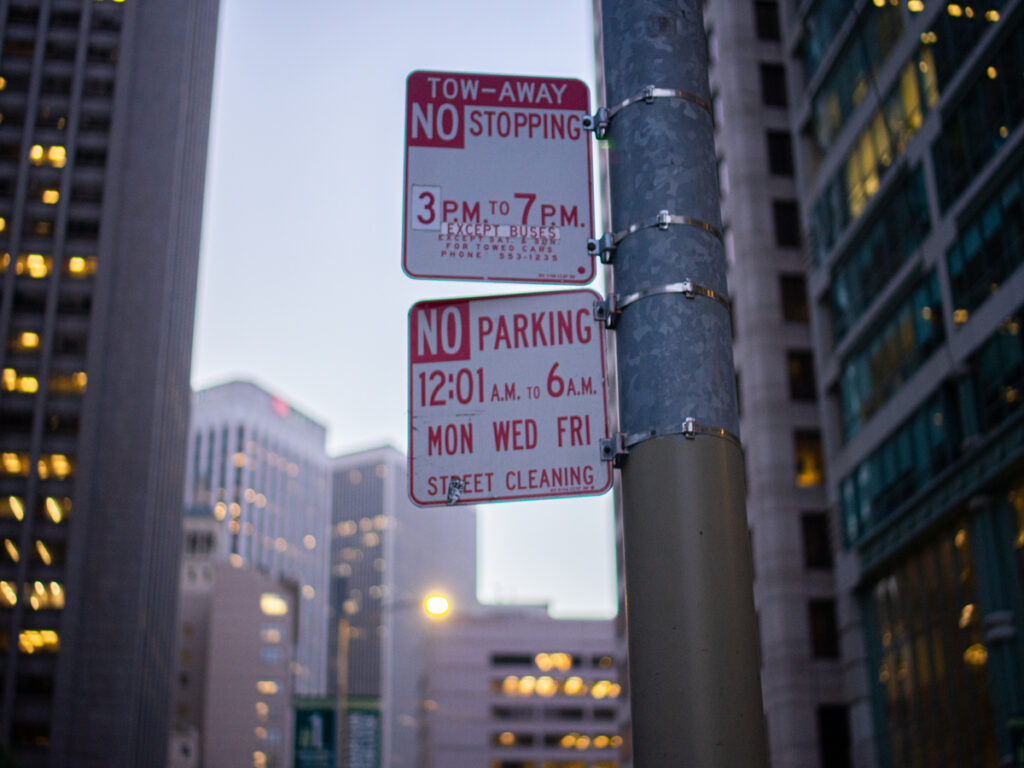
Single-Sided Brackets for End-of-Road Signs
Single-sided brackets are great when only one street name sign é necessário. These are often used at road ends or in tight spaces. Their simple design makes them quick to set up and keeps signs easy to see.
These sign brackets fit many post types, como uma rodada, quadrado, or fancy poles. Eles são leves, mas fortes, holding signs steady even in windy weather. If you need a basic way to show one street name sign, single-sided brackets are a smart pick.
Dica: Use single-sided brackets in low-traffic areas for a neat look.
2-Way Brackets for T-Intersections
At T-intersections, 2-way brackets hold two street name signs at right angles. This lets drivers see the signs clearly from both directions. They work well in cities or suburbs where streets meet at 90 graus.
You can attach 2-way brackets to round or square posts easily. Their strong build keeps signs straight and readable, Mesmo com mau tempo. Using 2-way brackets helps drivers find their way and avoid confusion at intersections.
3-Way Brackets for 3-Way Junctions
For spots where three roads meet, 3-way brackets are the best choice. They hold three street name signs at angles, so drivers can see them from all sides. These are especially helpful in rural areas or places with unusual road layouts.
3-way brackets are tough and resist rust, lasting for years. They help organize traffic and make tricky intersections safer. By using 3-way brackets, you make it easier for drivers to find their way in new areas.
Want to know when to use 2-way vs. 3-way brackets? Confira nosso blog: 2-Maneira vs.. 3-Pista de rua suportes: Qual é a diferença e quando usar cada for a practical breakdown of use cases and benefits.
4-Way Brackets for Big Intersections
4-way brackets help organize traffic at busy intersections. They hold four street name signs at right angles, forming a cross shape. This design lets drivers see street names clearly from all directions. It reduces confusion and makes navigation easier.
You’ll often see 4-way brackets in cities or areas with grid-like roads. They are strong and keep signs steady, mesmo em mau tempo ou tráfego pesado. These brackets fit round and square posts, making them flexible for different setups.
Dica: Use 4-way brackets to make big intersections safer and clearer. Their design helps drivers find streets quickly in crowded areas.
When installing, make sure signs are at the right height for visibility. Use rust-proof hardware to make the brackets last longer and stay reliable.
Cap-Mount Brackets for Stylish Signs
Cap-mount brackets give street signs a neat and fancy look. They sit on top of round or square poles, creating a clean design. These brackets are great for places where looks matter, like parks or neighborhoods.
Cap-mount brackets are simple to install and hold signs firmly. Their design stops signs from tilting or moving over time. They make street signs look better while staying useful for years.
Para a ponta: Pick cap-mount brackets for decorative signs. They are strong and stylish, perfect for areas that care about appearance.
When choosing cap-mount brackets, check the pole type to ensure they fit. Use good materials to avoid damage, especialmente ao ar livre.
Side-Mount Brackets for Stacked Signs
Side-mount brackets are great for stacking signs on one pole. They attach to the side of a post, keeping signs separate and easy to read. This setup works well in places with lots of signs, like downtowns or highways.
These brackets fit round, quadrado, or fancy posts, making them versatile. Their design keeps all signs visible without blocking each other.
Observação: Use side-mount brackets to save space and keep signs organized. They help drivers find their way in busy areas without confusion.
When installing, space the signs evenly for better readability. Use strong hardware to keep the brackets steady against wind or vibrations.
Mast Arm Brackets for Overhead Highway Signs
Mast arm brackets hold street signs high above busy roads. They attach to horizontal poles, called mast arms, to keep signs visible. You’ll see them on highways or big intersections where drivers need clear directions.
Why Use Mast Arm Brackets?
- Visibilidade: These brackets lift signs so drivers can see them early. This helps reduce confusion and keeps traffic safer.
- Durabilidade: Mast arm brackets are tough. They handle strong winds, vibrações, and bad weather without breaking.
- Compatibilidade: They work with large signs, including ones with reflective or LED features.
Dica: Use mast arm brackets for overhead signs in fast-moving traffic areas. They help drivers find their way quickly and safely.
Dicas de instalação
- Check Sign Weight: Make sure the bracket can hold the sign without bending.
- Secure the Bracket: Tighten bolts to stop movement from wind or shaking.
- Place for Visibility: Position the sign so drivers can see it clearly from far away.
Mast arm brackets are great for overhead signs. They improve safety and keep signs steady in tough conditions.
Wing Brackets for Double-Sided Street Name Signs
Wing brackets show street names on both sides of a post. They hold signs firmly and make them easy to see from different directions. You’ll find them in neighborhoods, áreas rurais, or places with two-way traffic.
Why Choose Wing Brackets?
- Economia de espaço: Wing brackets show signs on both sides, so you don’t need extra posts. This keeps things neat and organized.
- À prova de intempéries: These brackets are strong and resist damage from wind, chuva, ou neve.
- Versátil: Wing brackets fit round or square posts, making them useful for many setups.
Para a ponta: Use wing brackets where drivers need to see signs from both directions. They save space and make navigation easier.
Dicas de instalação
- Height is Key: Place signs at a height that’s easy for drivers to read.
- Rust-Proof Hardware: Use stainless steel or galvanized bolts to stop rust and keep brackets secure.
- Angle for Clarity: Adjust signs to face traffic directly for better visibility.
Wing brackets make signs easier to see and organize. They’re a smart choice for double-sided street name signs.
Factors to Think About When Picking Street Name Sign Brackets
Type of Street Sign Posts
Street sign posts come in different shapes, como uma rodada, quadrado, or fancy designs. Each shape works best with certain brackets. Por exemplo, cap-mount brackets sit neatly on top of round or square posts. Side-mount brackets attach to the side of a post instead.
The material of the post also matters. Steel and aluminum posts are strong and last long. Pick a bracket that matches the post material to avoid problems during setup.
Want to compare bracket materials and find the best match for your post? Leia nosso blog: Materiais de suporte de placas de rua em comparação: Alumínio vs.. Aço vs.. Plástico for a full breakdown of durability, custo, and ideal applications.
Number of Signs at One Spot
How many signs you need in one place affects your bracket choice. Single-sided brackets work well for just one sign. If you need more signs, try 2-way, 3-way, or 4-way brackets. These let you place signs at angles for better visibility.
For stacked signs, side-mount brackets are a good choice. They keep signs separate and easy to read. Mast arm brackets are strong enough for big overhead signs.
Para a ponta: Plan where your signs will go before picking brackets. This makes it easier to choose the right type for clear signage.
Clima e meio ambiente
Weather can affect how brackets perform. Windy areas need brackets made from tough materials like stainless steel or heavy-duty aluminum. These materials don’t bend or break easily.
In rainy places, rust-proof brackets are important. Galvanized or coated brackets last longer in wet conditions. For places with extreme heat or cold, pick brackets that handle temperature changes well.
Observação: High-quality brackets keep signs safe and visible, Mesmo com mau tempo.
Conformidade com os regulamentos
Street name sign brackets must follow rules to keep traffic safe. Estas regras garantem que os sinais sejam fáceis de ver, forte, e legal. When picking brackets, learn the local rules and national standards like the MUTCD (Manual sobre Dispositivos Uniformes de Controle de Tráfego).
Por que a conformidade é importante
Rules protect both drivers and pedestrians. Brackets that meet these rules keep signs at the right height and angle. They also make sure signs stay in place during storms or strong winds. Using the wrong brackets can cause fines or safety problems.
Dica: Check your local traffic rules before installing brackets. This avoids mistakes and keeps your signs legal.
Key Areas of Compliance
- Height and Placement
Signs must be placed at the right height for drivers to see. Overhead signs with mast arm brackets should be high enough for tall vehicles. Side-mounted signs should not block other signs or views. - Padrões materiais
Brackets should be made from strong materials like galvanized steel or aluminum. These materials don’t rust and last a long time. - Requisitos de visibilidade
Reflective or LED signs need brackets that support extra features. Mast arm brackets work well because they keep these signs steady and easy to see. - Wind and Weather Resistance
In stormy areas, brackets must handle strong winds. Tough brackets stop signs from falling or bending in bad weather.
How to Ensure Compliance
- Ask Local Authorities: Contact your city’s traffic office for specific rules.
- Pick Certified Brackets: Choose brackets tested for strength and safety.
- Follow Setup Directions: Use the right tools and steps to meet the rules.
Observação: Using compliant brackets saves money on repairs and keeps signs working well for years.
Seguindo as regras, you make traffic safer and more organized. Proper compliance keeps street name signs useful and legally approved.
Installation Tips for Street Name Sign Brackets
Matching Bolt Patterns to Sign Blade Type
Make sure the bracket’s bolt pattern matches the sign blade. Check the bolt holes on the sign blade first. Compare them with the bracket’s bolt layout to avoid problems. Some sign blades have pre-drilled holes for specific brackets. Using the wrong bracket can make signs loose or wobbly.
Use the right tools, like a wrench or socket set, to tighten bolts. Tighten bolts evenly so the sign stays straight. If you’re unsure about the bolt pattern, check the manufacturer’s instructions. Taking this step makes installing street signs easier and more secure.
Ensuring Correct Height and Orientation
Set the sign at the right height for clear visibility. Measure from the ground to the bottom of the sign. Follow local rules to meet height requirements. Most street signs should be 7 para 10 pés de altura. This height keeps signs visible without blocking views.
Make sure the sign faces oncoming traffic for easy reading. Use a level to check that the sign is straight. A crooked sign can confuse drivers or be hard to read. Double-check everything before tightening the bolts. Proper height and alignment make signs safe and easy to see.
Using Rust-Resistant Hardware
Rust-proof hardware helps brackets and signs last longer. Stainless steel and galvanized bolts don’t rust easily. These materials work well in wet or humid areas. Using rust-resistant hardware reduces the need for frequent repairs.
Check the hardware often for rust or damage. Replace rusty or broken bolts right away. Regular maintenance keeps your signs secure and in good shape. Spending a little more on quality hardware saves time and money over time.
Picking the right street sign brackets keeps roads safe and organized. Good brackets hold signs steady and easy to see, Mesmo em clima difícil. They also help manage traffic better, especially in neighborhoods or community areas. Using strong brackets lowers repair costs and makes your signs work longer.
For help, ask experts or suppliers who know your needs. They can suggest sign brackets that fit your area and follow local rules.
Perguntas frequentes
How are street signs attached to poles?
Street signs are attached to poles using brackets and stainless steel straps or bolts. The bracket secures the sign blade, while the hardware ensures a firm connection to round or square posts.
What is the best bracket for decorative street signs?
Cap-mount brackets are great for fancy street signs. They sit on top of poles and make signs look neat and stylish. These brackets are perfect for parks, bairros, or places where looks are important.
Dica: Use cap-mount brackets to give signs a clean and polished look.
How are street name signs mounted?
Street name signs are typically mounted using specialized brackets that attach the sign to a pole or post. Common types include top-mount, side-mount, and crosspiece brackets, each designed for different sign shapes and orientations.
Can I use one bracket for multiple signs?
Sim, multi-way brackets like 2-way, 3-way, or 4-way brackets can hold more than one sign. They keep signs organized and easy to see at intersections.
Are mast arm brackets only for highways?
Não, mast arm brackets can be used anywhere for overhead signs. They are common on highways but also work at big intersections or places needing clear signs. They hold heavy signs and LED features securely.
Why are street name signs important?
Street name signs are essential for navigation, emergency response, public safety, and efficient traffic flow. Clear signage helps drivers, pedestres, and emergency services locate streets quickly and accurately.


